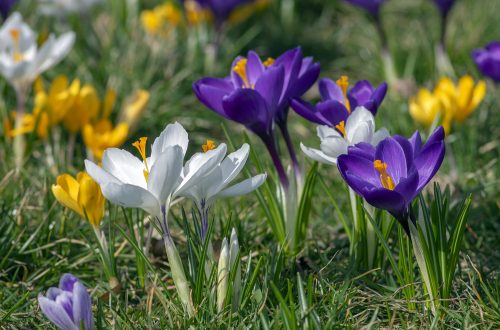

As the days lengthen and temperatures rise, the garden awakens, with each plant stretching towards the sun, eager for growth and renewal. At Green Solutions Lawn Care & Pest Control, we bring over 80 years of collective expertise to your garden, ensuring that your ornamentals receive the precise nutrients they need during this critical time. Our detailed guide dives into the nuanced world of spring fertilization, providing you with the knowledge to invigorate your garden effectively.
Spring is not just another season in the garden; it's a period of pivotal growth and development. Fertilization during this time is akin to giving your plants a well-balanced diet tailored to their unique growth phases and nutritional needs. This ensures they emerge from dormancy with vigor, setting the stage for a season of robust health and beauty.
Plants require a trio of primary nutrients: nitrogen (N), phosphorus (P), and potassium (K), each serving a unique function. Nitrogen promotes leafy growth, phosphorus is crucial for root and flower development, and potassium enhances overall plant health. The correct balance of these nutrients, determined by a soil test, ensures your plants thrive.
When it comes to fertilizing your garden in spring, the decision to use organic or synthetic fertilizers is pivotal. This choice should reflect not only your immediate gardening goals but also your commitment to the long-term health and sustainability of your garden's ecosystem.
These fertilizers work in harmony with the soil's biology, slowly breaking down to release nutrients and improve soil structure. They promote the activity of beneficial microorganisms, which in turn help plants absorb nutrients more efficiently.
The advantages of organic fertilizers include:
However, organic fertilizers may have variable nutrient ratios and require a longer time to show visible results, which could be considered when planning your garden care schedule.
Synthetic, or chemical, fertilizers are manufactured to provide immediate nutrient availability to plants. They can be tailor-made to offer specific nutrient ratios, addressing precise garden needs swiftly and effectively.
The benefits of synthetic fertilizers include:
Yet, synthetic fertilizers do not enhance soil structure or biological activity. Overuse can lead to nutrient runoff, potentially harming local waterways and wildlife. They might also contribute to soil acidification over time.
Your decision should consider several factors:
By choosing the right fertilizer, you're not just feeding your plants; you're making a decision that affects the microbial life within the soil, the health of your garden in the long term, and the environment at large. Whether you opt for organic or synthetic, ensure that your choice aligns with your gardening philosophy, the specific needs of your plants, and the overarching health of your garden ecosystem.
Flower gardens, with their diverse plant palette, require a nuanced fertilization approach. Slow-release fertilizers are preferred, minimizing the risk of over-fertilization while ensuring nutrients are available throughout the growth period.
Productive gardens demand a rich, nutrient-dense soil foundation. A balanced start with granular or liquid fertilizers, complemented by organic amendments, ensures your edible plants receive comprehensive nutrition for optimal growth and yield.
For Lawns
The lushness of your lawn is a testament to the right fertilization strategy. A slow-release, nitrogen-focused fertilizer encourages vibrant growth without the pitfalls of rapid, unsustainable growth spurts.
These garden stalwarts benefit from a balanced, slow-release fertilizer applied as they exit dormancy. This ensures they have the nutrients needed for leaf, flower, and root development, anchoring their presence in your garden.
Fertilizing should sync with your plants' natural growth cycles. As new growth appears, early spring is ideal, but avoid fertilizing during extreme weather to prevent stress. Incorporate fertilizers into the soil or apply them according to the plant's specific uptake mechanisms for maximum efficiency.
A professional soil test reveals your soil's nutrient status and pH level. This data guides your fertilization strategy, ensuring you provide exactly what your plants need without excess or deficiency.
Your garden is in expert hands with Green Solutions Lawn Care & Pest Control. Our deep understanding of plant nutrition and local soil conditions ensures that your spring fertilization is not just an act of maintenance but a strategic step towards a flourishing, resilient garden. Embark on your spring gardening journey with us, where every granule of fertilizer and every drop of nutrients is a step towards a more vibrant, healthy garden. Contact us today!
Read next: Is that a Worm Eating Your Lawn?
Already a Customer? Sign In Here